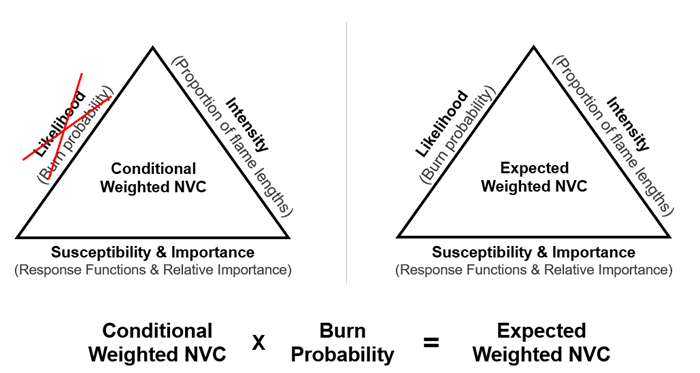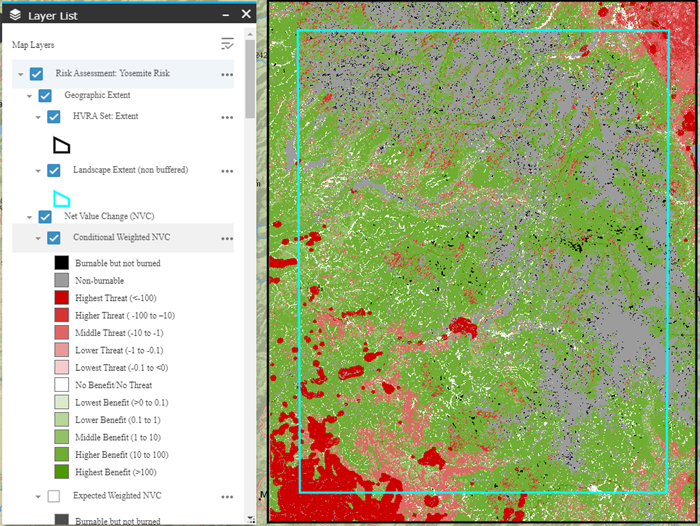Tip: Trying to determine whether to use Conditional or Expected NVC? See the QWRA Considerations topic for more discussion on choosing between Conditional and Expected NVC. For details on how C(wNVC) is calculated, see the Technical documentation topic).
Conditional Weighted Net Value Change (NVC), C(wNVC), highlights the likely effects of a fire on Highly Valued Resources or Assets (HVRAs) with the assumption that a fire will or has occurred (burn probability = 1.0). It is most useful in planning scenarios where the presence of a fire is assumed and the analysis goal is less about probability and more about anticipated threats and benefits from the fire. For example, this output could address a situation where you know it is a matter of when (and not if) a fire occurs an area and you want to assess what the impact of the fire be on the HVRAs. Will any HVRA’s benefit from a fire? Or will the impacts all be negative?

Since Conditional Weighted NVC is conditional on a fire occurring, it does not include Burn Probability in the calculation, rather C(wNVC) is calculated using the following:
- Proportion of Flame Lengths (from Landscape Burn Probability model output)
- Sub-HVRA maps (from Map Values)
- Response Functions (User input)
- Relative Importance (User input)
- Relative Extent (from Exposure Analysis)
Conditional Weighted NVC is calculated for every pixel and takes into account overlapping HVRAs. Positive values of C(wNVC) are considered benefits; negative values are considered threats. A value of 0 indicates there is neither threat nor benefit to that pixel burning. These zero values can occur for a few reasons, including:
- When no HVRAs are present.
- When fire burned at an intensity that only correlated to neutral Response Function (RF) values (i.e., only burned between 0-2 and 2-4 ft and the RF for those were 0).
- When the summation of NVC was zero.
The image below shows an example of Conditional Weighted NVC in Map Studio with a range of values from negative (threats, indicated with a red color scheme), to positive (benefit, indicated by a green color scheme).
